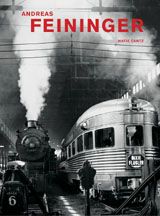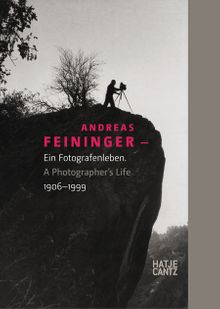| |||||||||||||||||||||||||
PHOTOGRAPHY MONOGRAPHS
|
|
STATUS: Out of print | 00/00/00 For assistance locating a copy, please see our list of recommended out of print specialists |
 Andreas Feininger: That's Photography
Andreas Feininger: That's Photography
Published by Hatje Cantz.
Essays by Otto Letze and Thomas Buchsteiner.
The basic principles underlying the photographic art of Andreas Feininger are clarity, simplicity and organization. The eldest son of painter Lyonel Feininger, he was born in Paris in 1906. Upon completion of training as a cabinet-maker at the Bauhaus in Weimar in the early 1920s, he went on to study architecture in the state schools of Weimar and Zerbst. It was while working as an architectural photographer in Stockholm that he developed the sweeping vistas and fine balance for which his pictures were famous. Emigrating to New York following the outbreak of World War II, Feininger was hired as a photo-editor by Life magazine. In his own work, he captured images of urban canyons, skyscrapers, bridges and elevated railways in concentrated, atmospheric photographs that are regarded as classical works today. He applied the same enthusiasm to nature studies: his detail images of insects, flowers, shells, wood and stones imbue these forms with a sculptural character. That's Photography presents the work of this classic photographer, who died in 1999.
PUBLISHER
Hatje Cantz
BOOK FORMAT
Hardcover, 6.5 x 9 in. / 320 pgs / 200 duotone.
PUBLISHING STATUS
Pub Date 8/2/2004
Out of print
DISTRIBUTION
D.A.P. Exclusive
Catalog: FALL 2004
PRODUCT DETAILS
ISBN 9783775714297 TRADE
List Price: $39.95 CAD $53.95
AVAILABILITY
Not available
STATUS: Out of print | 00/00/00 For assistance locating a copy, please see our list of recommended out of print specialists |
